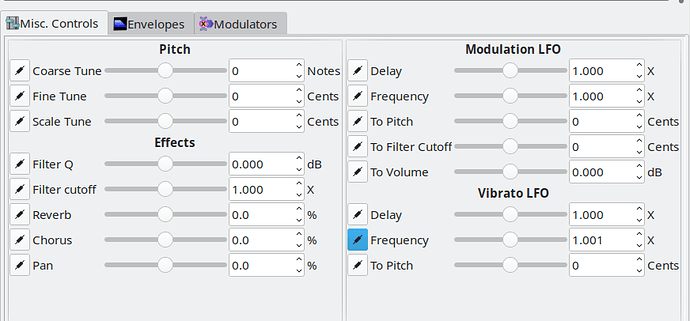I will mention that Soundfonts are a little more than just a simple sample player.
Soundfonts can comprise multiple sounds per instrument, and, within the soundfont definition, you can specify which sample is played for a given note range (which could be a single note) or velocity range.
Why is this important? Let’s say you took a single sample of an instrument, such as a flute or a piano, played at middle C. If you and repitched that sample across the whole range of possible notes, it would sound realistic when playing middle C and some of the nearby notes, but would sound increasingly unrealistic the farther away from middle C you played the note.
Equally, if you took a sample of a note on a piano at mid volume, and just changed the volume of it to represent a softly or loudly played piano note, it would also not sound realistic.
So Soundfonts allow you to capture multiple samples for an instrument, and to define which note and velocity range plays each sample. In the extreme case, you could have several samples for every possible note on the keyboard representing that note played at different velocities, and many of the better piano sample soundfonts probably do exactly this.
But, for simpler instruments, you can also define the soundfont with a much smaller number of samples, by specifying which note range plays each sample. In this case, the sample will then be artificially re-pitched to play notes which were higher or lower than the original sample. Whether this works well or not depends on the instrument.
A while back I did a recording of the bells at my local church tower, and created a soundfont from them. There were eight bells, representing an octave, as follows:
Bell 1 (treble) F MIDI Note 65
Bell 2 E MIDI Note 64
Bell 3 D MIDI Note 62
Bell 4 C MIDI Note 60
Bell 5 Bb MIDI Note 58
Bell 6 A MIDI Note 57
Bell 7 G MIDI Note 55
Bell 8 (tenor) F MIDI Note 53
In the case you needed a note outside of this octave, one of samples was re-pitched. This is the mapping of the samples onto the notes within the Swami instrument editor:

For up to about half an octave either way, this sounded fine. Beyond this it started to sound odd, but for my application it wasn’t a problem.
Soundfonts also let you do a whole bunch of other things to create a useful instrument, including:
- Apply effects, such as vibrato, chorus, detuning, filtering and filter resonance
- Define different envelopes for volume or modulation/effect levels
- Map effects onto external controllers, such as modulation wheels or aftertouch
- Define loop points to allow the note to play longer than the original sample
- Deal with both pitched and percussion instruments
- Create presets within the instrument for different variations (for instance, it might be possible to make a “honky tonk piano” preset by applying some modulation to a standard piano)
So, as you can see, soundfonts are a lot more capable than simple sample playback, and this allows them to be used to build very complex and capable instruments including realistic sounding pianos, orchestral instruments, etc. and synth-style sounds with expression control.
And all you need to use these soundfonts is a suitable soundfont plugin,like ACE Fluidsynth.
Cheers,
Keith
